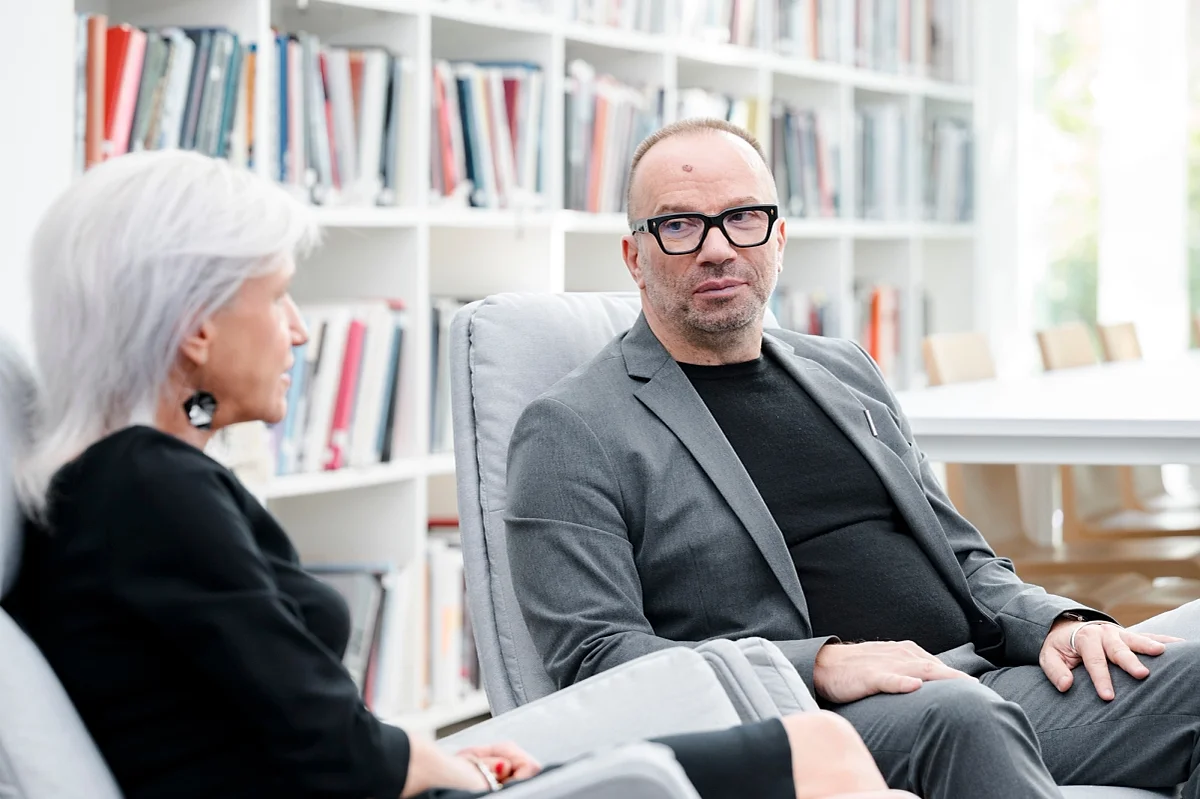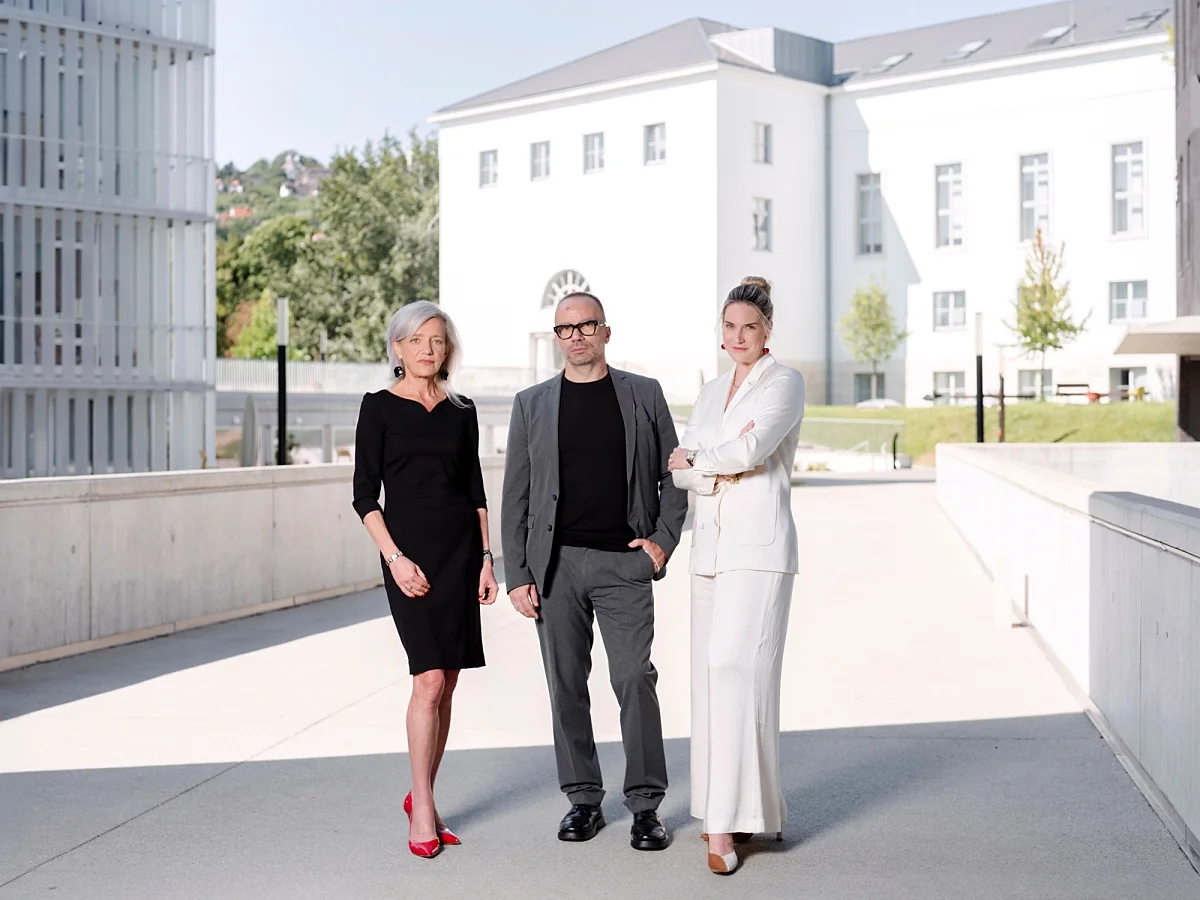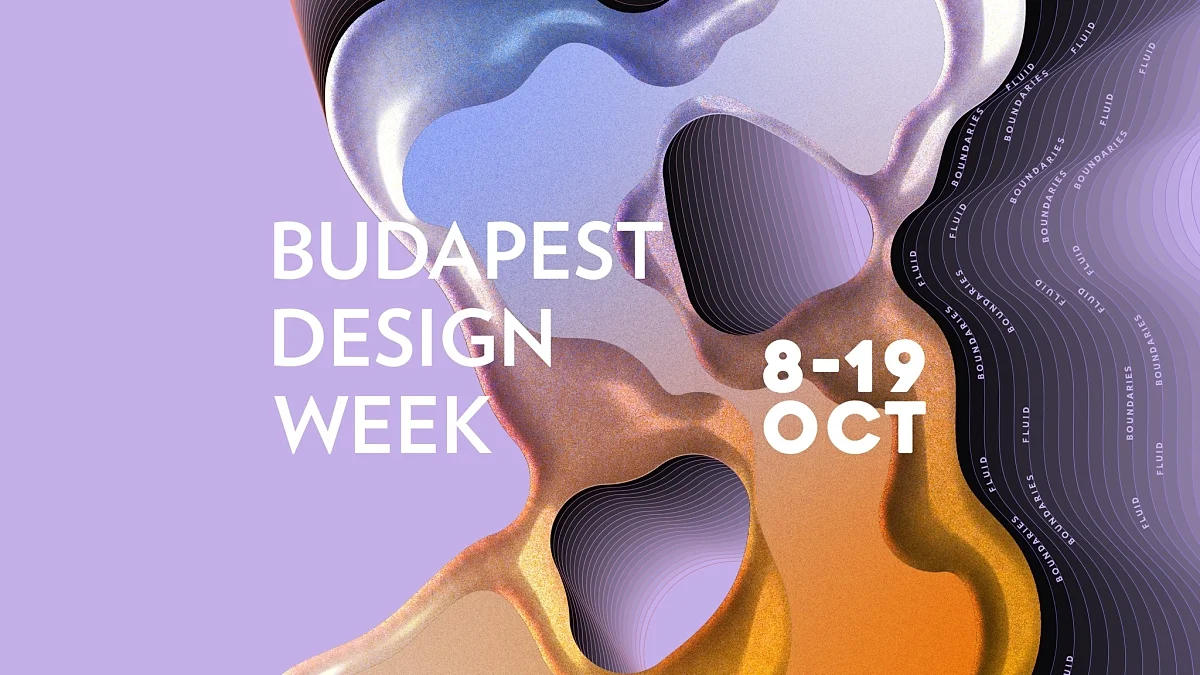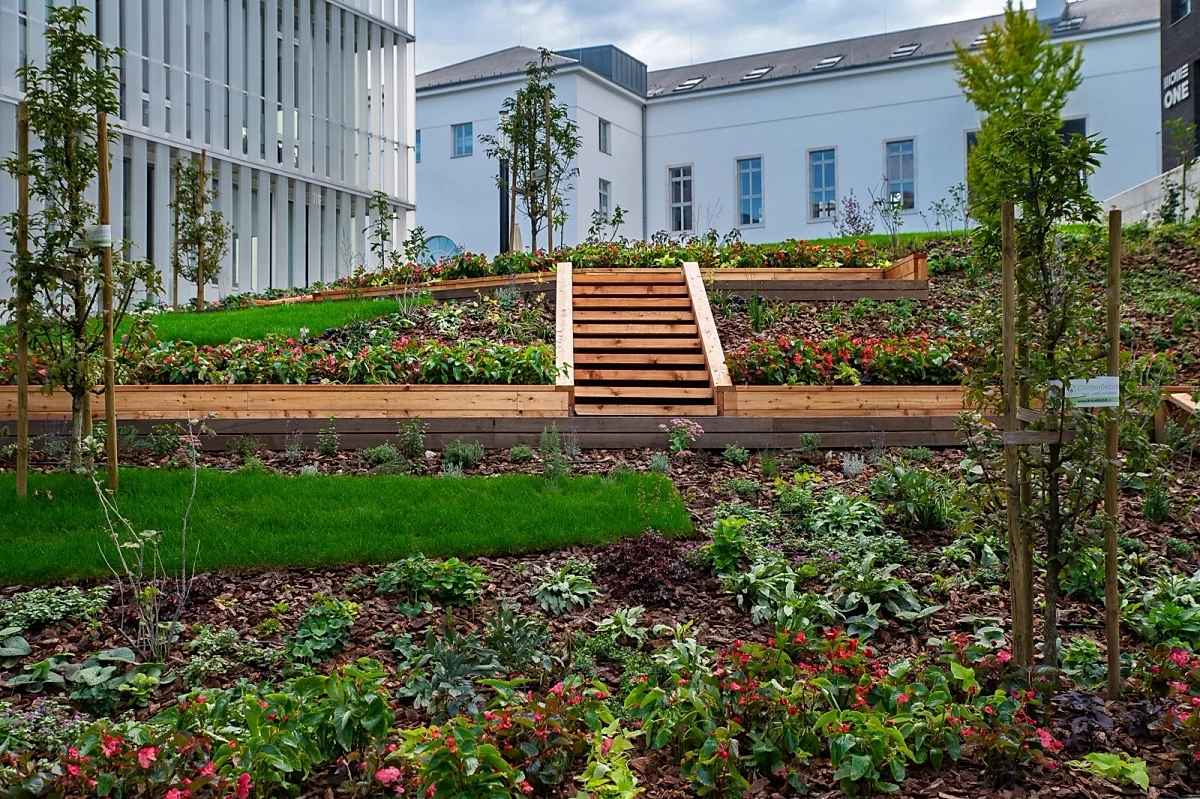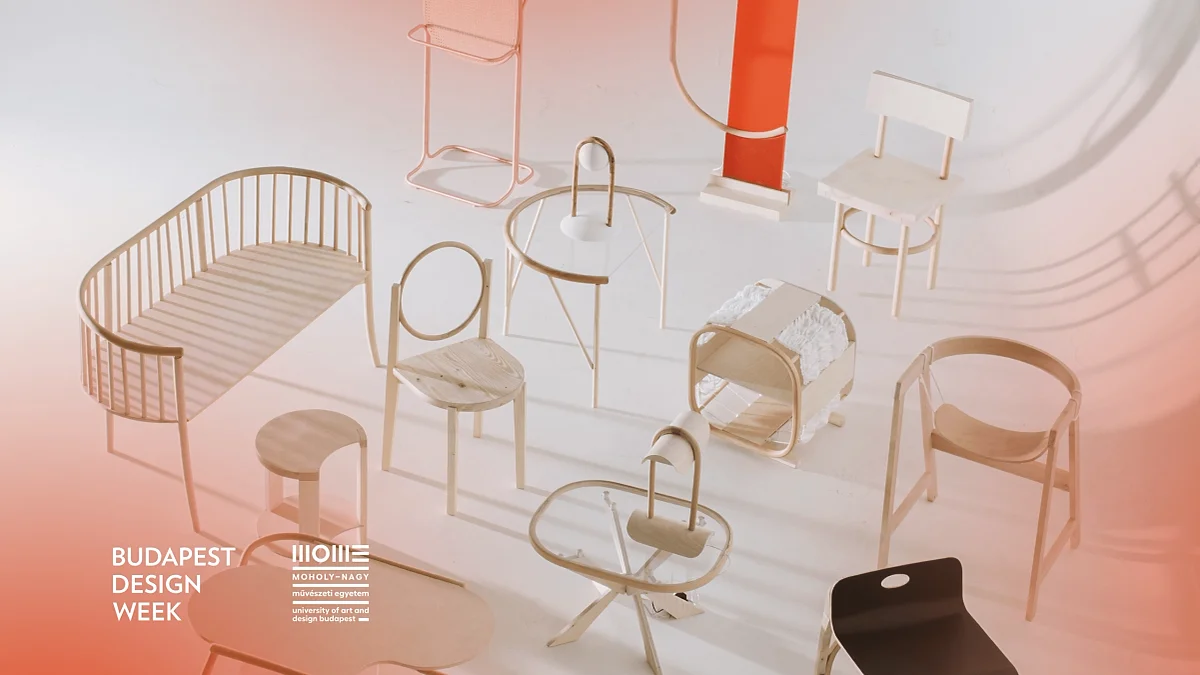
Involving students takes centre stage in the spring semester
Three weeks have passed since the first days of the organisational transition. While it may still be too early to draw firm conclusions, I’m curious about how you see the outcomes of the transformation so far.
Pál Koós: Great things are taking place at MOME and these are truly exciting times. We are transforming into a university with a unique structure, unparalleled both at home and abroad, and this is something we are immensely proud of. This isn’t something we began yesterday; we’ve spent two years developing the University of the Future programme, with over a hundred MOME educators, researchers, staff members, and doctoral students working out the details. The Senate has supported the programme at every critical juncture. Three exceptional professionals – architect Péter Pozsár, designer Péter Molnár, and communications expert Csaba Gosztonyi – have taken charge of our three new schools. Bringing experience from both the academia and the industry, along with a real passion for the work, they’ve thrown themselves into the role. These are the weeks and months of transition, and it’s only natural that everyone is still learning how the new system works. The reform itself is also a creative process, full of consultations and collective brainstorming.
Dr Petra Aczél: The University of the Future is founded on a simple idea – the need to be prepared for what lies ahead. It’s easy to see that amidst today’s significant cultural, societal, and environmental changes, MOME cannot remain an ivory tower. We educate young people and bear responsibility for how they will live their lives. Likewise, we are also responsible for the world itself, and for training young people who understand it and can navigate and shape it wisely. As leaders, one of our key priorities has been to ensure that the new model doesn’t erase but rather enhances the wealth of knowledge and experience that MOME has accumulated over the years.
Lili Érmezei: As an organisational psychologist, I find this period both fascinating and uplifting. It feels as though I’m witnessing the creation of a monumental masterpiece. What we envisioned together with the MOME community is now taking shape, like a carefully designed work of art where every detail matters and is finally falling into place. As the new structure comes to life, the university as a whole resembles a vast design table filled with ideas, colours, and materials where everyone adds their own touches and nuances. This process reminds me that the most beautiful artworks are always born from experimentation and passion.
The two most important changes within the university's structure are that education will be organised into three distinct schools, with knowledge centres replacing the institutes. Can you explain how tasks will be divided in this new structure and what the relationship and division of work will be between the three schools and the knowledge centres?
Pál Koós: It’s important to see the whole system as a living, interconnected structure, which will offer far more flexibility, greater professional freedom, as well as more opportunities for growth for both our teachers and researchers than the old institutional model.
Dr Petra Aczél: The new model is perhaps easiest to picture as a bird rising into the air, prepared for a long-haul flight. One wing represents the schools responsible for education, research, and innovation. The other wing belongs to the knowledge centres, which support and nurture the professional advancement of educators, researchers, and designers and artists, and cultivate the individual professional cultures. The middle part, the ‘body’ of the bird, contains the muscles and bones corresponding to the units that support daily operations and collaboration, plus the leadership. A system can only take off if everything is interconnected and works in sync. This is why we are leaving behind the old organisational logic, which was built on hermetically sealed units. We are creating coordinated movement.
Does this mean that the schools and knowledge centres will have equal rank?
Lili Érmezei: The question of hierarchy came up several times during a recent student forum, namely, how will the schools and the knowledge centres relate to each other? I made this point then, and I’ll say it again: we designed the University of the Future to be built on a foundation of collaboration, not rivalry. This is not merely a possibility; it’s a prerequisite for the structure to function effectively. We envision the university as a community where everyone finds their place, where different skills meet and complement each other. This guiding principle will also define the relationship between the schools and the knowledge centres: rather than operating hierarchically, they will work closely together as equal partners.
The selection of knowledge centre leaders is currently underway. As rector, what criteria did you consider when evaluating the applications? Precisely what made you decide to issue new calls for applications for some knowledge centres?
Pál Koós: First and foremost, I’d like to stress that the leadership roles at the newly established knowledge centres attracted remarkable and highly skilled professionals, both from within the university and beyond. It is a source of great joy that this revitalisation process has enabled several members of MOME’s academic community, such as film expert Zsuzsanna Vincze and graphic designer Bence Simon Péter, to take the next step in their academic careers. It’s equally exciting that MOME is welcoming outstanding new professionals, such as Judit Horváth, a graduate of Die Angewandte in Vienna and curator at the Contemporary Design Collection of the Museum of Applied Arts, and Dávid Szauder, internationally recognised and accomplished expert in exploring the intersection of artificial intelligence and creativity. In four of the seven knowledge centres – the Digital Environment and Media Knowledge Centre, the Film Knowledge Centre, the Form and Material Knowledge Centre, and the Graphic Design Knowledge Centre – we successfully identified the ideal leaders in the first round of applications. However, as the head of the university, it is both my responsibility and my duty to appoint candidates with compelling and robust professional concepts for the remaining three areas: the Philosophy and Leadership Knowledge Centre, the Photography Knowledge Centre, and the Built Environment Knowledge Centre. For these, we require even more dynamic and forward-looking visions, which is why we decided to issue new calls for applications. Leading these hubs will be no small undertaking. I find it a particularly promising step forward that the application process has sparked lively and constructive debates within the MOME community about the skills required for leadership positions. This conversation was long overdue at our university, and I am hopeful that by the end of March, all knowledge centres will have their appointed leaders.
What exactly will be the role of the knowledge centres, and how will they reflect the excellence framework that the university leadership frequently emphasises as a priority for the future?
Pál Koós: The knowledge centres will place much greater emphasis on supporting the professional advancement and career development of our educators and researchers than ever before. The outcome has turned out to be the exact opposite of the concerns raised when building the model: instead of dissolving MOME’s longstanding professional communities, they will gain new prospects.
Dr Petra Aczél: The knowledge centres are intellectual, creative, and research communities. They serve as shared hubs for colleagues connected to specific professional cultures. It’s important to recognise that at a university, we do much more than deliver lectures or conduct research, and this is particularly true for MOME. We also work on conferences, exhibitions, and joint creative projects, which are just as vital as teaching. Without these activities, an educator or researcher cannot truly be credible in the classroom. For this reason, the primary responsibility of knowledge centre leaders will not be teaching. Instead, they will oversee the cultivation of their professional culture, foster the development of colleagues, and enhance the international visibility of their respective knowledge areas. As a result, the most important criteria in their selection were their effectiveness as leaders, their extensive international networks, and the kind of integration in their field that allows them to inspire and support their colleagues while attracting valuable professional projects to the university.
What is the next milestone in the University of the Future process?
Lili Érmezei: We are approaching an exciting stage that we have all been anticipating. From now on, with the partnership of the Students’ Council, MOME students will have an opportunity to systematically and actively participate in the university’s various revitalisation processes and take a role in shaping the University of the Future programme’s avenues of development. I hope that within a year, students will feel that MOME is not just a place to study but also a space where they can personally contribute to building a more innovative and engaging university.
Pál Koós: I am counting heavily on the MOME student community. In the coming days, students will receive a “formal” invitation from us, encouraging them to get involved in the collaborative work related to the University of the Future programme through the Students’ Council. Of course, the broader dialogue will also continue. Last year, we held student forums on the University of the Future, and we have planned three additional sessions for this spring semester to discuss the most important aspects of the reform that directly affect them. The first forum will take place on 19 February at 4 p.m., and we warmly invite all students who are passionate about MOME’s future to join us.
